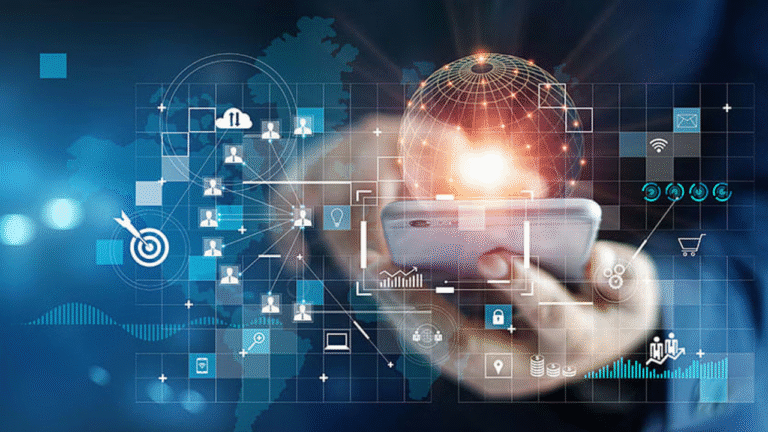AI Tools That Are Reshaping Digital Education in 2025
Introduction
Education in 2025 doesn’t look like it did just five years ago. Classrooms have expanded beyond four walls, and learning has become more personalized, interactive, and tech-driven. At the heart of this transformation lies Artificial Intelligence (AI)—a force that is not just assisting but actively reshaping how students learn, how teachers teach, and how educational institutions operate.
From virtual tutors to automated grading systems and adaptive learning platforms, AI tools are revolutionizing digital education. They are breaking barriers of geography, affordability, and accessibility, offering customized learning paths for every student regardless of background or skill level. In this article, we explore the most impactful AI tools reshaping digital education in 2025, and how they’re improving outcomes for both learners and educators.
1. Personalized Learning Platforms
One of the biggest revolutions in AI-driven education is personalized learning. Tools like Socratic by Google, Century Tech, and Knewton Alta use machine learning algorithms to understand each student’s learning style, strengths, and weaknesses. Based on their progress, these platforms tailor lessons and content in real-time.
Instead of one-size-fits-all textbooks, students in 2025 now learn at their own pace with customized exercises and feedback, making learning more efficient and less stressful.
2. AI-Powered Virtual Tutors and Assistants
AI tutors are no longer science fiction. Platforms like Jill Watson, developed by Georgia Tech, or AI chatbots integrated into Khan Academy and Byju’s, are acting as 24/7 teaching assistants. These virtual tutors answer student queries, explain concepts in multiple ways, and even recommend resources based on individual gaps in understanding.
This makes learning on-demand and accessible, especially in rural or underfunded schools that lack physical teacher availability.
3. Automated Assessment and Feedback
Gone are the days of waiting weeks for exam results or assignment feedback. AI tools like Gradescope and Eval.ai now offer automated grading and instant feedback—even for open-ended questions and essays using natural language processing (NLP).
This allows educators to focus more on teaching and mentorship rather than manual evaluation, while students benefit from quicker insights into their performance.
4. AI in Language Learning
Tools like Duolingo Max, Elsa Speak, and LingQ use AI to provide real-time pronunciation correction, adaptive vocabulary lessons, and even conversation simulations.
With multilingual AI, students can learn any language at any time, removing the need for expensive tutors or physical classrooms. For Indian learners, platforms are even integrating regional languages with AI to help bridge linguistic gaps in education.
5. Content Creation and Curriculum Design
AI is also helping teachers behind the scenes. Tools like ChatGPT (custom-trained for educators), Quillionz, and ScribeSense assist in:
- Creating quizzes and assignments
- Designing adaptive lesson plans
- Generating summaries and teaching notes
This means teachers can spend less time preparing material and more time engaging with their students meaningfully.
6. Intelligent Learning Analytics
Using AI-powered data dashboards like PowerSchool, Edmodo Insights, or Smart Sparrow, educators can now monitor:
- Student progress
- Attendance trends
- Engagement levels
- Areas of struggle or disinterest
These analytics help institutions intervene early, offer extra help when needed, and design programs that suit their students better. Decision-making in education is now data-informed, not guesswork.
7. Immersive Learning with AI and AR/VR
AI isn’t just about text and data—it’s now integrated with augmented and virtual reality (AR/VR) tools to make learning immersive. Platforms like Labster, Google Expeditions, and zSpace use AI to guide students through virtual science labs, historical events, or even space exploration.
This brings practical, experiential learning to students who may never have access to physical labs or museums. It’s particularly transformative for subjects like biology, chemistry, geography, and history.
8. Voice Assistants in Classrooms
Voice AI tools such as Amazon Alexa for Education, Google Assistant integrations, and custom AI bots are now being used in smart classrooms. Students can:
- Ask questions aloud
- Solve problems hands-free
- Control smart boards and devices
This is especially helpful for inclusive learning, supporting students with disabilities or those who struggle with traditional interfaces.
9. AI Tools for Exam Preparation and Competitive Tests
In India, competitive exams are a major academic milestone. Tools like Embibe, Toppr, and Testbook now offer AI-driven mock tests, performance analysis, and adaptive question sets that grow in difficulty as the learner improves.
These platforms help students track their progress, identify weak areas, and build confidence—often at a fraction of the cost of coaching institutes.
10. Safeguarding and Proctoring Tools
With the rise of online learning also comes concerns around academic honesty and safety. AI-based proctoring tools like ProctorU, Honorlock, and Mettl use face recognition, voice tracking, and behavior analysis to monitor exams remotely.
Additionally, AI algorithms detect cyberbullying, plagiarism, and data misuse, helping schools create safe digital environments for students.
Challenges and Ethical Considerations
While AI is reshaping digital education for the better, it comes with challenges:
- Data Privacy: Student data is highly sensitive and must be protected.
- Bias in AI Algorithms: If not trained on diverse data, AI can reinforce inequalities.
- Teacher Dependency: Over-reliance on AI tools may weaken human interaction.
To ensure long-term benefits, AI in education must be used responsibly, with a strong focus on transparency, ethics, and inclusion.
Final Thoughts
AI tools have brought us to the doorstep of an educational revolution. In 2025, learners no longer need to be in top-tier cities or elite schools to access quality education. With a smartphone, internet connection, and a little curiosity, anyone can now learn from the best teachers, at their own pace, and in their own language.
As we move forward, the goal should not be to replace teachers with AI, but to empower educators and students alike with tools that make learning more effective, inclusive, and enjoyable.
Stay connected to eshikshakosh.com.co for more insights on how technology is transforming the education landscape in India and beyond.






